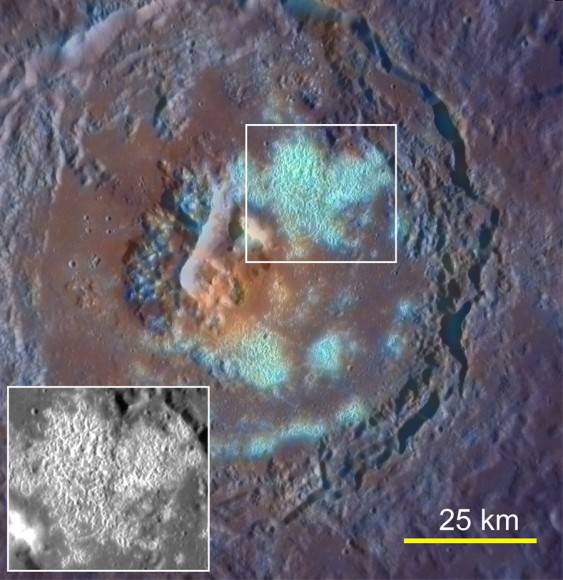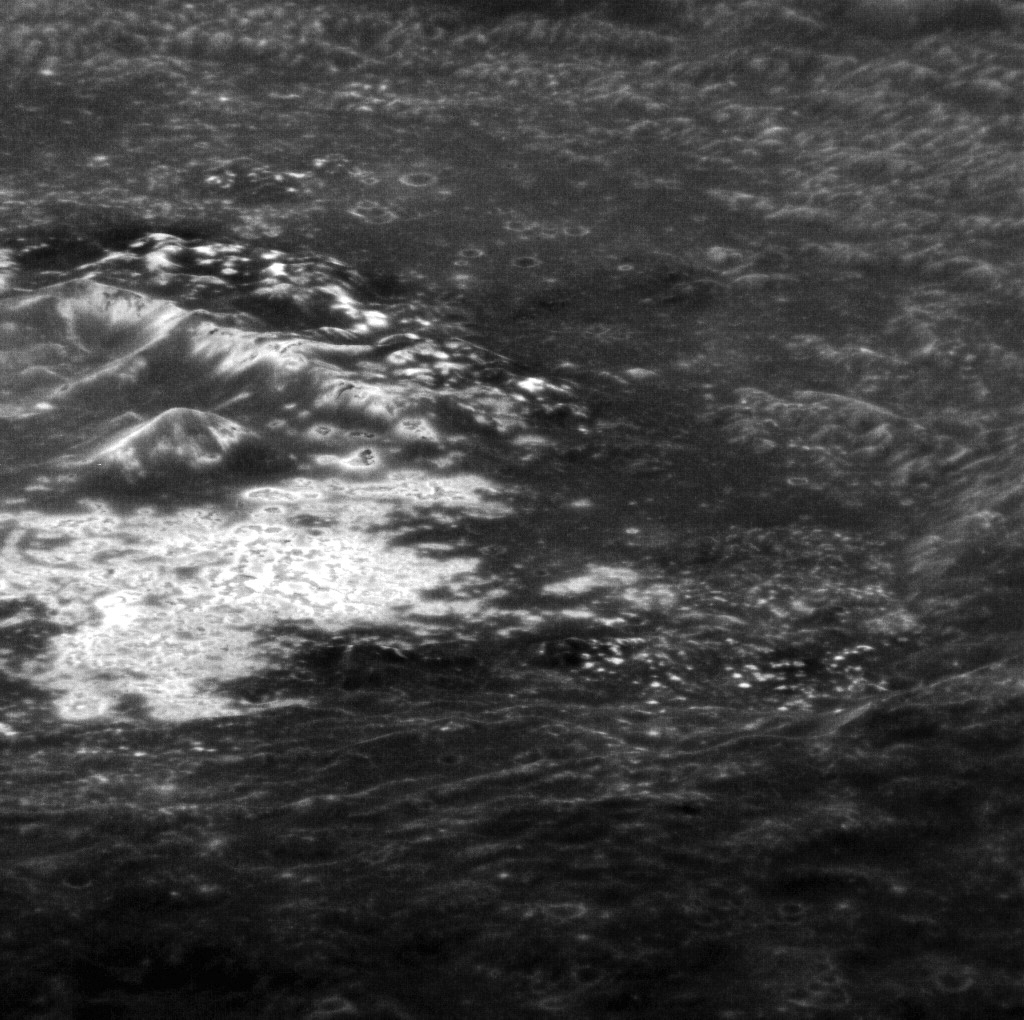Here’s a rather interesting view from orbit around the innermost planet: Mercury’s Tyagaraja crater, the interior of which is seen here in an oblique-angled image acquired by the MESSENGER spacecraft on November 12, 2011 (and released August 16, 2013.)
This view looks west across the northern portion of the 97-kilometer (60-mile) -wide crater, and shows some of its large central peaks, terraced walls, and bright erosion features called hollows that are spread across a wide swath of its interior.
First seen by MESSENGER in 2011, hollows are thought to indicate an erosion process unique to Mercury because of its composition and close proximity to the Sun. The lack of craters within hollows seems to indicate that they are relatively young features… in fact, they may be part of a process that continues today.
This image was acquired as a high-resolution targeted observation. Targeted observations are images of a small area on Mercury’s surface at resolutions much higher than the 200-meter/pixel morphology base map.

Tyagaraja is named after Kakarla Tyagabrahmam, an 18th-century composer of classical Indian Carnatic music.
Read more on the MESSENGER website here.
Images: NASA/Johns Hopkins University Applied Physics Laboratory/Carnegie Institution of Washington


Reminds me of the bubbling mudpots in Yellowstone? cept instead of boiling water.. perhaps boiling sulfur or other light metal?
The hollows are thought to be eroded features, not volcanic or geothermal. May be volatile materials in Mercury’s crust sandblasted away by the solar wind.
Though “hollow”ed-out, and not formations swollen (by process different, as noted), images still remind me of human “radiation burns”. Relocated planet, surface torn and stripped(?), the iron-heavy world held in Sun’s infernal grip.